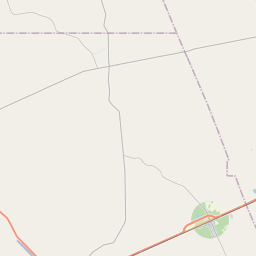Providence Or Camp Creek Church
Historical marker location:
Manor, Georgia
( Marker is at the intersection of Valdosta Highway (U.S. 84) and Jim Mixon Road, on the right when traveling west on Valdosta Highway.)
Marker installed: 1958







© OpenStreetMap contributors
» 3 mi. →
Loading...
Searching for other points of interest within 3 miles of this location.Georgia was named in honor of King George II of England, who granted a charter for the colony in 1732.
About Ware County
Ware County Timeline
Ware County, Georgia has a rich history that dates back to the early 1800s. The area was originally inhabited by Native Americans, including the Creek and Cherokee tribes. In 1824, the Georgia General Assembly established Ware County, named after Nicholas Ware, a prominent Georgia politician and U.S. Senator. The county was carved out of land previously belonging to Appling County.
During the early years of its settlement, Ware County experienced rapid growth and development. The timber industry played a significant role in the county's economy, attracting many settlers to the area. The abundance of longleaf pine made Ware County a prime location for sawmills and lumber production. The county's advantageous location along the Suwannee River also facilitated trade and transportation, further contributing to its prosperity.
One of the significant landmarks in Ware County's history is the founding of Waycross, the county seat, in 1872. Its strategic location at the intersection of two major railroad lines, the Atlantic Coast Line and the Georgia & Florida Railroad, made Waycross a thriving transportation hub. The city quickly grew, attracting businesses and industries to the area.
Ware County also played a role in the Civil Rights Movement. In 1963, during the height of the movement, Waycross experienced significant racial tensions and protests. The city became a focal point for civil rights activists, and their activism led to significant changes in the local government and public accommodations.
Today, Ware County continues to thrive as a vibrant community. It is known for its natural beauty, with attractions such as the Okefenokee Swamp and Laura S. Walker State Park, which draw visitors from near and far. The timber industry remains important to the local economy, along with manufacturing, agriculture, and tourism. Ware County's history is a testament to the resilience and adaptability of its residents as they have navigated through challenges and embraced opportunities for growth and progress.
During the early years of its settlement, Ware County experienced rapid growth and development. The timber industry played a significant role in the county's economy, attracting many settlers to the area. The abundance of longleaf pine made Ware County a prime location for sawmills and lumber production. The county's advantageous location along the Suwannee River also facilitated trade and transportation, further contributing to its prosperity.
One of the significant landmarks in Ware County's history is the founding of Waycross, the county seat, in 1872. Its strategic location at the intersection of two major railroad lines, the Atlantic Coast Line and the Georgia & Florida Railroad, made Waycross a thriving transportation hub. The city quickly grew, attracting businesses and industries to the area.
Ware County also played a role in the Civil Rights Movement. In 1963, during the height of the movement, Waycross experienced significant racial tensions and protests. The city became a focal point for civil rights activists, and their activism led to significant changes in the local government and public accommodations.
Today, Ware County continues to thrive as a vibrant community. It is known for its natural beauty, with attractions such as the Okefenokee Swamp and Laura S. Walker State Park, which draw visitors from near and far. The timber industry remains important to the local economy, along with manufacturing, agriculture, and tourism. Ware County's history is a testament to the resilience and adaptability of its residents as they have navigated through challenges and embraced opportunities for growth and progress.
Ware County Timeline
This timeline provides a condensed summary of the historical journey of Ware County, Georgia.
- 1824: Ware County is established by an act of the Georgia General Assembly.
- 1829: The county seat of Ware County is officially established in Waycross.
- 1873: The Atlantic and Gulf Railroad is completed, providing a vital transportation link for the county.
- 1909: Waycross and Ware County experience a devastating fire, which destroys a significant portion of the city.
- 1946: The creation of the Okefenokee National Wildlife Refuge helps protect and preserve the unique ecosystem within the county.
- 1970s: The discovery of oil in Ware County leads to an economic boom in the area.
- 1999: The opening of the Okefenokee Swamp Park provides visitors with educational and recreational opportunities in the county.
- 2010: The population of Ware County reaches over 36,000 residents.